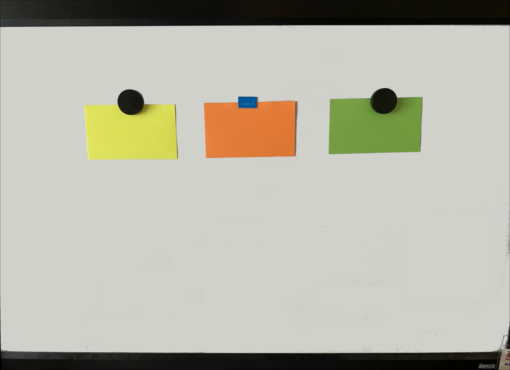Outlining a script involves figuring out what happens in every scene before you actually start writing any of them.
We screenwriters tend to always do this, like it or not.
Whereas novelists are often “pantsers,” which means they “fly by the seat of their pants” without knowing in detail where things are going.
Why does this not tend to work for TV and film?
And what’s the best approach to writing an outline?
The two obvious differences between screen and fiction writers (a/k/a novelists) are:
1. Novelists communicate directly with the audience using words.
2. Novelists can go inside the heads of characters and give them a rich inner life (while telling the reader what they’re thinking). This often becomes part of what makes the story compelling.
Not so in screenwriting. The screenwriter’s job involves:
1. Determining everything that will happen, and then describing the finished product to a professional (who will go make the thing) as a blueprint for it.
2. Telling the story through action, meaning what characters do in pursuit of their desires, not what they think. While it needs to be clear what’s driving the characters (some amount of thoughts, feelings and desires), too much talking about it or trying to go inside their head doesn’t work so well. Instead, audiences enjoy watching the results of those inner desires in terms of what they do, and the conflicts that ensue.
Novelists can sometimes get by on wonderful language and inner lives and don’t need to be quite so focused on dramatizing “action in pursuit of goals,” so they can sometimes “wander” a bit. They can explore. (Also they may have so internalized what makes for compelling scenes and stories that those just flow out of them naturally.)
Scripts can’t usually wander like that. They’re more of a compressed, structured form where the goal is to keep the audience engaged through a story that builds coherently in tension as the main character pursues goals, battles problems, encounters conflicts and complications, and adjusts their approach and tries again. (This might sound like an action movie but this is basically true in every genre.)
What makes a script work is largely result of how well-structured those events are in its middle. And if you don’t pre-plan those and just kind of wander and explore, things will tend to end up loose, unfocused, and lacking that intense narrative progression, that almost “sports fan engagement” that we long for on film and TV.
Not that there isn’t a place for exploring writing scenes to get to know your characters, work through blocks, experiment and play. There is. But most of the time we end up outlining a script, which means figure out the plot sequencing in advance, testing it and revising it until it seems like it really works.
Once you’re writing actual scenes (i.e. adding dialogue and more detailed action), things will inevitably change somewhat, but usually the outline keeps one on track.
My approach to outlining
So how do you write one?
First, there are two key steps prior to outlining. Number one is working on the basic idea, a step I believe writers tend to bypass far too quickly. That’s why I wrote a book and created a course about it. It can take a lot of work on a lot of ideas to eventually find one that addresses the 7 key elements I talk about in The Idea.
And there will likely be pages and pages of notes and explorations to get to the finish line of this — the point where you could explain the beginning, middle and end of the story in a quick verbal pitch or a single page synopsis, and also in a logline. And hopefully, objective professionals would be into it and encourage you to go write it. (Unfortunately that happens a lot more rarely than we’d like it to.)
Once that’s done, is it time to outline?
Not usually. The next step is figuring out the structure in somewhat more detail. That’s where the Save the Cat “beat sheet” can be really helpful. It goes deeper into specific sections and key moments in a story than a one-pager would do. While I think one needs to have a strong idea of all three acts before going to this step, it adds another layer of granularity. And usually ends up about 4 pages in length.
But it’s not an outline. This is a fact Blake Snyder acknowledges when he talks in Save the Cat about “cards on a board” following the beat sheet. That’s where you figure out the specific individual scenes. Which is the same as outlining.
I like his idea of 40 scenes in a script, which means they average 2.75 pages in length (if the script is 110 pages). That means each scene is a complete dramatic unit, like a story in miniature, with a beginning, middle and end. Try not to be confused by the other definition of “scene,” which is every time there’s a new slugline. There could be as many as 100+ of those in a script. Each of your 2.75-page scenes could consist of several location and/or time changes (also called “scenes”), but still add up to one complete dramatic unit.
I sometimes use cards, but I usually outline in a Word document using a paragraph of text for each scene. And the focus of that paragraph is on what the main character is doing in that scene to try to move in the direction of their ultimate goal (or fix their main story problem) — and what conflicts they encounter that stop them from fully succeeding. And how the events of the scene complicate the situation and force future decisions and actions in later scenes.
Ideally every scene is a variation on this. Meaning it’s not just characters talking with low conflict. It’s not just something happening to the main character, or them reacting to events without being active. And it’s usually not jumping around to other characters, unless they are the main characters of their own stories in a multi-story script, in which case the scene should still do all of the above, but for a different “main character” that it’s focused on. Features often have only one main character and every scene is from their point-of-view. But TV episodes almost always take this “ensemble approach.”
So there’s a lot to get right in an outline: much thought and experimentation that goes into crafting each scene in this way. You don’t show up to this document with all the answers. It will probably teach you how little you really know, even though you thought you had it mostly worked out. And it might take pages and pages of notes and ruminations in a separate document to arrive at the choices that will go in the outline. This is why it’s one the three key processes I take my coaching clients through: after the story/concept phase which focuses on idea and structure, but before going to script.
I’ve done an outline for virtually every script I’ve written professionally, and usually turned it into the producers for their feedback as a required step in the process. But even when I’m writing on spec, I do it for myself. I might even expand it (from a typical length of 10-15 pages for a feature) into a longer “scriptment” that goes into even further detail. Because even the finished outline doesn’t give me everything I need to feel confident about each scene when I go to script. There is usually still more detailed planning to be done for each scene before it will just flow onto the page, inspired.
Which of course is what we all want.
In my experience that doesn’t just happen when I jump into a draft too soon. It happens when I feel really solid about what’s going to be in a scene before I write it. I’m still surprised and delighted, hopefully, about what comes to me when I do write it. But the solid foundation allows for that, rather than getting in the way of it.



I am one of those panzers you were talking about. Courses have taught me to do outlines and they are helpful. Outlining can contain quite a few elements to it. Maybe it’s the learning curve, but it slows me down and effects the flow. Combine that with speedwriting and it feels like a cop is after me with a ticket. I guess different strokes for different folk. Thanks for the info…
Excellent article Erik! Have to ask… Have you checked out prewrite.com? Would love to hear your thoughts.
Spot on, as usual.
nice job, Erik!!
Wow, Erik! Excellent article. It really explains a lot. This is the way I work as well but I use Chris ??? Mini Movie Method. Whatever works, right? Awesome content. Keep ‘em coming!